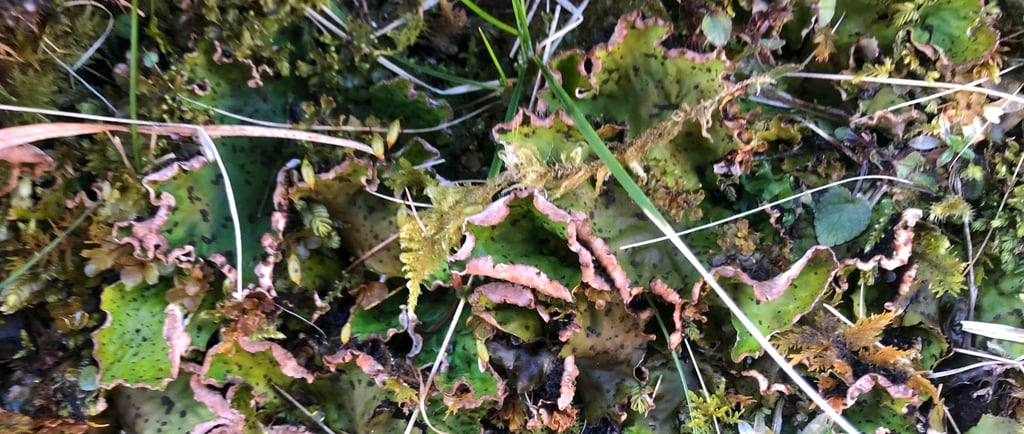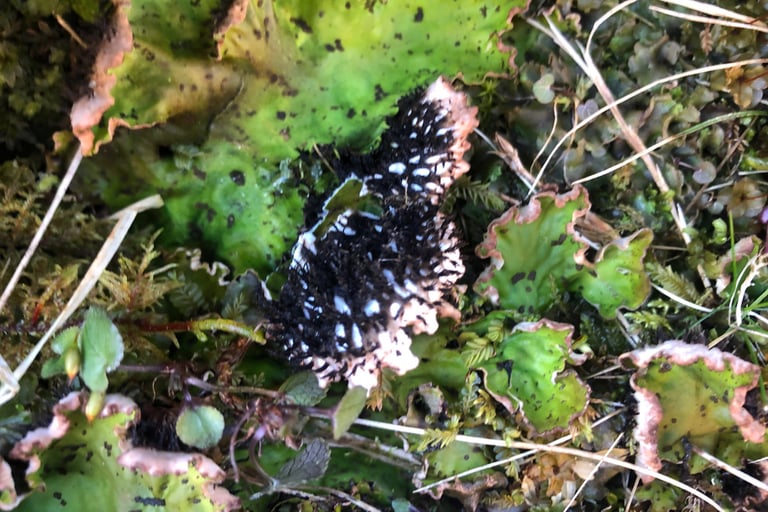Peltigera leucophlebia
Three species in a "oner". At least.
LICHENSSPECIES SPIELS
IM
4/13/20252 min read


Look a bright green lichen! Good thing it is too, or else I wouldn't have spotted it.
This bright green colour is due to one of this lichen's two photobionts. The photobiont of a lichen is the part which photosynthesises, and from which the mycobiont (fungus) nab the sugars (or sugar alcohols) produced. Traditionally, there has been quite a bit of debate among lichenologists around who gains and who loses from this situation, with some casting the fungus as farming or even jailing the photobiont. This seems a bit odd as clearly most of these species are not present in such a wide range of habitats as pure fungi or algae/cyanobacteria.
Merlin Sheldrake makes the very good point that - like lichens - we are also composite organisms which depend upon a wide range of microbial species within our bodies...
Anyway, most lichens have algal photobionts - with cyanobacteria doing the dirty work in only around 10% of all species. Somewhat unusually, most Peltigera have cyanobacterial photobionts - the evolution of this genus has been linked to its ability to make use of Nostoc cyanobacteria.
Peltigera leucophlebia has both! The main bright green thallus of the lichen contains an algae of the genus Coccomyxa, but the little black dots on the upper surface contain Nostoc cyanobacteria (O'Brien et al., 2013).
These little black dots are called cephalodia - and are a useful feature in identifying which Peltigera we have (a good clue that it is a Peltigera is the large thick, felted looking thallus, which has large conspicuous rhizines on the underside). The fact our lichen is bright green with cephalodia present means we are looking at one of three British species.
The fact the cephalodia are more wart-like than disk-shaped and not easily removed + the net-like pattern of the veins on the underside of the lichen suggest it is Peltigera leucophlebia.
This species occurs both in coastal grasslands and in fairly calcareous upland ravines - I spotted it under an overhanging rock in Coire Cheathaich, Breadalbane where the calcareous rocks support a myriad of interesting plants, including one of the large population of Salix reticulata in Scotland.


Catkin Ecology
Finding Scotland's missing habitat
CONTACT US
info@catkinecology.co.uk
+44 7918 024809
© 2025. All rights reserved.
